#leica iiic
Text
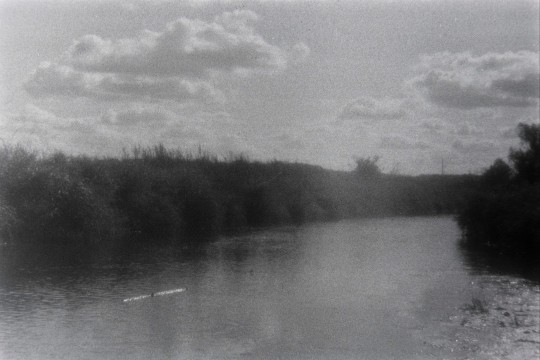
River
Madison, Wisconsin
#photographers on tumblr#photography#lensblr#southern gothic#women artists#women photographers#rural america#black and white#35mm#leica iiic#kentmere 400#midwest#midwest gothic#nature#water#wisconsin
85 notes
·
View notes
Photo

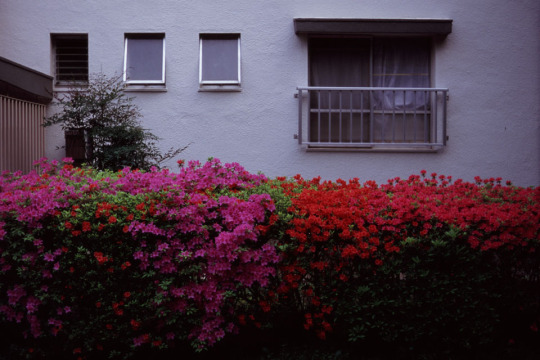

#35mm color film#35mm Color Photography#original photography on tumblr#original photographers#photographers on tumblr#Danchi#Japan#Leica iiic
42 notes
·
View notes
Video
Elmar5 1065 von Zeno Felkl
0 notes
Text
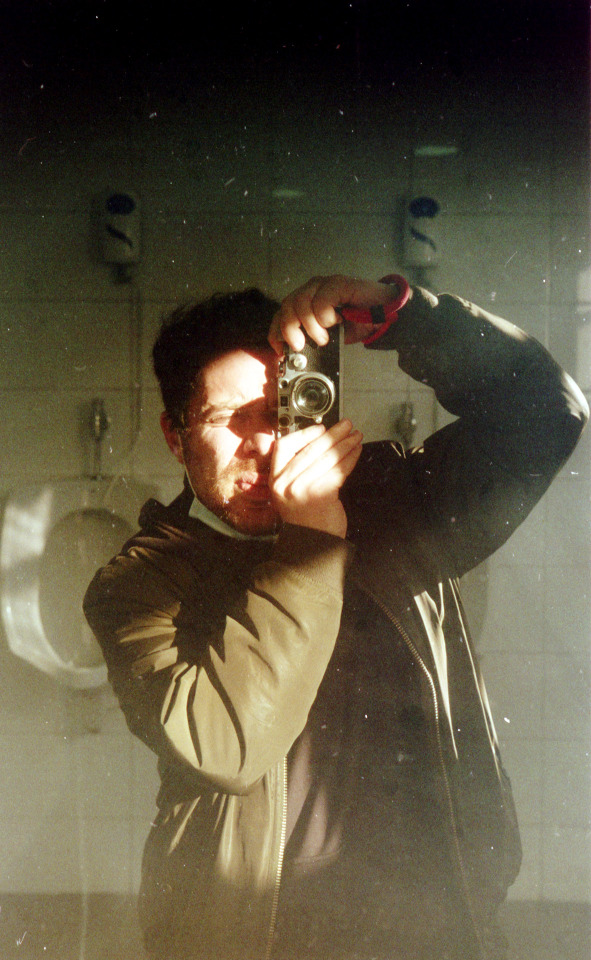
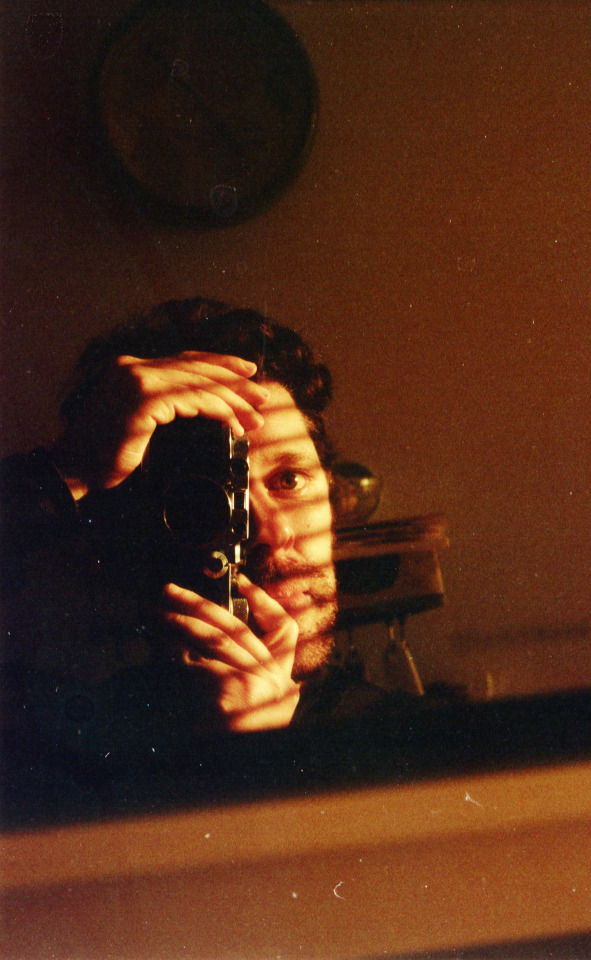
27 de septiembre, 2022
34 años
0 notes
Photo

Ums Verrecken. Juli 2022
Ums Verrecken bring ich nicht mehr zusammen, wo das war. Ich stolpere mit meinem Rädchen durch so viele verschiedene Gegenden, daß ich oft völlig den Überblick verliere. Irgendwo in Berlin, innerhalb des S-Bahn-Ringes...
Aber das sind die Bilder, die mich erfreuen. Wegen derer mache ich mir die ganze Arbeit. Wegen solcher renne ich mit meiner kleinen Leica, in dem Fall IIIc mit Jupiter-12 aus sowj. Fertigung, durch die Gegend. Benötige 1h für die Entwicklung von jeweils 2 Filmen, dann nochmal 1h fürs Scannen pro Film. Und hab dann noch keinen Papierabzug.
Trotzdem wäre ich äußerst unzufrieden, hätte ich dieses Bildchen nicht als echtes Negativ zum Anfassen vorliegen, sondern nur als virtuelles Digitalgewixe.
Die Psychologie dahinter kann ich mir selber nicht erklären. Zumal ich als schwerstens entwicklungsgestörter Zeitgenosse noch immer tief in der oralen Phase stecke, weit davon entfernt, irgendeine anale Sammelwut zu entwickeln.
0 notes
Text
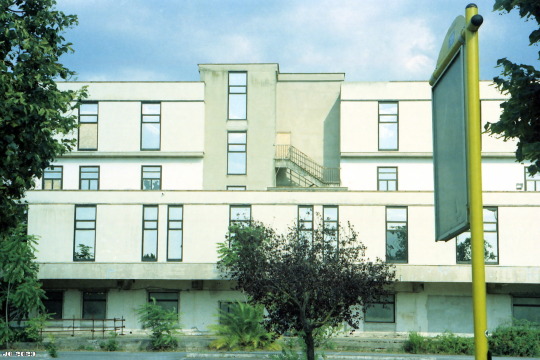
Reflections
Each window has its own reflection. Office building in a suburb of Rome. Leica IIIc with 50 mm Summitar and Kodak Vision 2 cinema film.
#reflection#photographers on tumblr#original photographers#film is alive#architecture#Rome#office building#windows#i still shoot film#analog photography#film photography#italy#35 mm photography#Kodak Vision 2#Leica
70 notes
·
View notes
Text
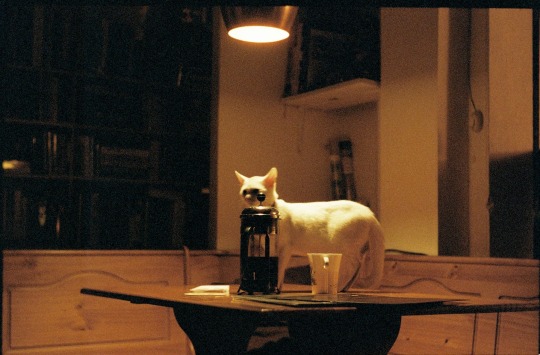
Vida en 35mm.
Bola De Nieve, hogar 2023.
Leica IIIc, Summitar 5cm f/2, Kodak Pro Image 100, C-41.
47 notes
·
View notes
Photo

Vivian Maier (US, 1926 - 2009)
Self-Portrait, 1955
Short bio of wonder [edited]
American of French and Austro-Hungarian extraction, intensely guarded and private, decidedly unmaterialistic (money-wise), Vivian would amass found items, art books, newspaper clippings, home films and thankfully her negatives. She recorded the 2nd 1\2 of the 20th c. Urban America, creating masterpieces of Street Photography.
Maier would leave behind over 100,000 negatives and a series of homemade documentary films and audio recordings.
Having picked up photography in Europe 2 years earlier, came back to New York City in 1951, where she would comb the streets. In 1956 Vivian left for Chicago, where she’d spend most of the rest of her life working as a Nanny and “quietly” taking pictures.
Her first camera was a modest Kodak Brownie (one shutter speed, no aperture and focus control) soon to be replaced in 1952 by her first (of many) Rolleiflex. She later also used a Leica IIIc, an Ihagee Exakta, a Zeiss Contarex and various other SLR cameras.
Maier’s massive body of work would come to light when in 2007 at a local thrift auction house on Chicago’s Northwest Side. John Maloof discovered, championed and archived her work. Now, with roughly 90% of her work reconstructed and cataloged, it's available to the public.
https://www.vivianmaier.com/gallery/self-portraits/#slide-13
https://www.vivianmaier.com/about-vivian-maier/
#Vivian Maier#Street Photography#masterpiece#self portrait#mirror#odd#secret#nunny#history#story#found objects
41 notes
·
View notes
Text
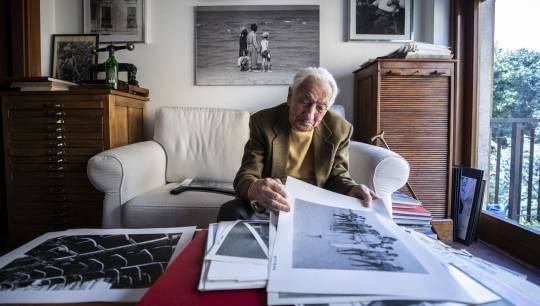
The photographer Paolo Di Paolo, who has died aged 98, documented the renaissance of Italy following the dark days of the second world war, capturing that country’s 1950s and 60s glamour. His star shone brightly for 15 years before he turned his back on photography, but in that time he recorded the luminosity of cultural figures such as Pier Paolo Pasolini, Gina Lollobrigida and Tennessee Williams, as well as the optimism and dignity of ordinary people.
His pictures captured the shift from a more innocent, rural life, in a style that mirrored the neorealism movement in Italian film, as embodied in the shot of three boys on a bucolic hill looking towards the sprawl of Rome. His keen eye recorded the societal tension between the haves and have-nots, but his humanist approach highlighted the elegance of every person, regardless of circumstance. He said: “You might not know the subject but you understand the situation. In every image there is a story to tell … that is my law.”
Di Paolo started out as a self-taught amateur, taking photographs for pleasure with a considered approach. “Each shot had to be a good one. If the situation was not as I had in my mind, I wouldn’t take the picture.”
In 1954, he took his photos to Mario Pannunzio, the editor of the influential weekly current affairs magazine Il Mondo. Pannunzio recognised Di Paolo’s talent, and the photographer found his spiritual home.
He earned money working for other publications, notably Tempo, who sent him on assignment abroad. However, it was on home soil, on the self-titled 1959 assignment for Successo magazine, The Long Road of Sand, that Di Paolo produced some of his finest reportage. He embarked on a road trip along the coast in his Arnolt MG, with the author and poet Pasolini in the passenger seat, documenting Italians on vacation at the dawn of a new era. Di Paolo said: “I was looking for an Italy that looked to the future.”
His intelligence, empathy and discretion garnered trust and allowed him to take many candid portraits of major cultural figures including Sophia Loren applying makeup, Marcello Mastroianni sipping coffee and Kim Novak ironing. He formed a strong bond with the enigmatic actor Anna Magnani and his portraits of her with her son capture, and are captured by, intimacy.
Paolo was born into a poor family in the village of Larino, in Molise. His father, Michele Di Paolo, ran a small shop that sold tobacco and salt and his mother, Michelina (nee Lallo), was a smallholder and a skilled painter and embroiderer. He had five step-siblings from his father’s two previous marriages.
He attended the village school then moved to Rome to complete the final year of his studies at Liceo Classico Augusto, before returning to Larino. During the war he served in the Granatieri (Grenadiers) near his home, but did not see action. Afterwards he began writing for local newspapers, but he wanted more from life.
In 1949, at the age of 24, he left home to study history and philosophy at La Sapienza University of Rome. He intended to return to Larino to become a teacher there, but fell in with a group of young artists that was a hotbed of ideas and creativity, and realised he needed to explore a different path.
He had been making ends meet working at a tourism magazine, and was on his way to their offices in 1953 when he saw and fell in love with a Leica IIIc camera in the window of a nearby opticians. He had found the means with which to express himself.
He resigned from his job and used his severance money to buy the camera. Abandoning his studies shortly before graduation, he threw himself into the new humanist movement in photography. “The strength and enthusiasm that motivated us young people was overwhelming: our happiness was intoxicating.”
However in 1966, with the rise of television and the dawn of salacious celebrity culture, Il Mondo closed. Di Paolo was devastated. He wrote a telegram to Pannunzio: “ Today … the ambition to be a photographer has died.”
The following year Di Paolo photographed the Valentino haute couture show, but he was becoming increasingly disillusioned. In 1968 he went to see a photo editor who wanted him to exploit his society contacts, to get “some spice”.
Di Paolo’s strong ethical sense clashed with this new aggressive style and he refused to be associated with the paparazzi. At the peak of his powers, he hung up his camera and shut away his 250,000 negatives, prints and slides.
He moved to the countryside outside Rome, taking a job as an art director for the carabinieri (Italy’s regional police). Over the next 40 years he produced books, which included his photos of the cadets’ lives, and calendars, for the force. In 1973, he married Elena Marcelli, his former assistant, and they had two children, Michele and Silvia. He lived a quiet life and indulged his passions for winemaking, dogs and vintage cars.
In 1997, Silvia was hunting for a pair of skis in the cellar of her parents’ home when she was shocked to discover his photographic archive. She had no idea her father had been a photographer. She asked him about his work but he was reluctant to speak about it. It would take years of cajoling before he allowed Silvia to bring his work back to life.
Finally, recognition flowed. His first exhibition, Il Mio Mondo, was held at the gallery il museo del louvre in Rome, in 2016. Three years later, the MAXXI museum in the city staged a major retrospective, Mondo Perduto, with an accompanying monograph that is the only collection of his work to date.
Pierpaolo Piccioli, the creative director of Valentino, saw the MAXXI exhibition and, inspired by Di Paolo’s 1967 Valentino pictures, invited the then 94-year-old to photograph behind the scenes at the fashion house’s 2020 spring/summer couture show in Paris.
A documentary about Di Paolo’s life and work, The Treasure of His Youth, by the fashion photographer Bruce Weber, premiered at the Rome film festival in 2021 and is due for release in the UK next year. In May, to coincide with his 98th birthday, Di Paolo was awarded an honorary degree from La Sapienza.
He is survived by Elena, his children and two grandchildren, Matilde and Leonardo.
🔔 Paolo Di Paolo, photographer, born 17 May 1925; died 12 June 2023
Daily inspiration. Discover more photos at http://justforbooks.tumblr.com
12 notes
·
View notes
Text

Wingra Stone & Redi-Mix
Madison, Wisconsin
#photographers on tumblr#photography#lensblr#rural decay#southern gothic#women artists#women photographers#rural america#urban decay#black and white#industrial#industrial decay#wisconsin#midwest#midwest gothic#35mm#leica iiic#elmar 50mm f2.8
25 notes
·
View notes
Photo

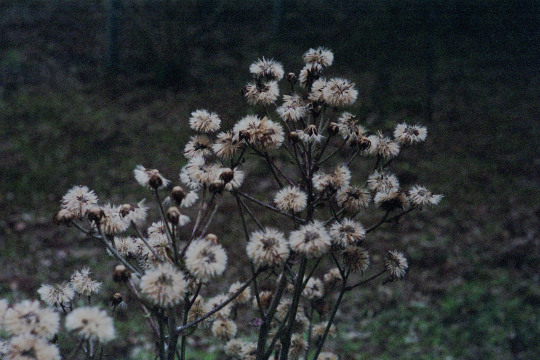
Leica IIIc
#film#film photography#35mm film#35mm color film#35mm Color Photography#original photography on tumblr#original photographers#photographers on tumblr#photgraphers on tumblr#Leica iiic#Japan
22 notes
·
View notes
Photo

stéphane marco
Le chardon au grillage
Leica IIIc,Elmar 9 cm 1946 sur visoflex II + bague OTQNO, Fomapan 100, D 76.
4 notes
·
View notes
Photo
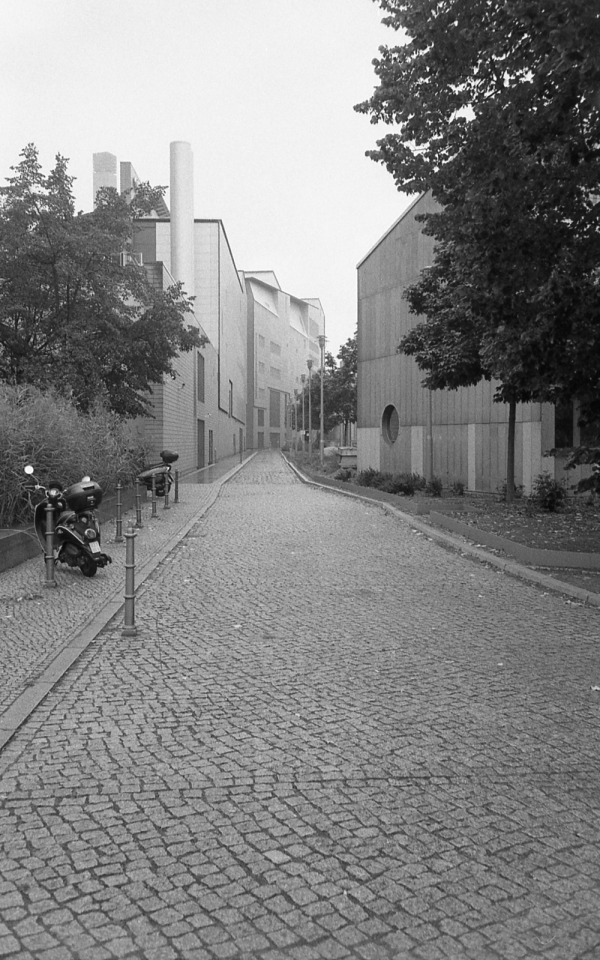
Gasse hinter der Spielbank. Okt 2021
Da stehen wahrscheinlich spät in der Nacht die reuigen Sünder an der Hintertür und überlegen sich, ob sie sich in den Kopf schießen oder doch die Nieren ihrer Kinder verkaufen sollen.
Als ich ein kleiner Junge war und mein Gedächtnis noch wie eine Maschine arbeitete, saß in Salzburg für einen ganzen Urlaub ein Croupier der Wiesbadener Spielbank mit uns am Frühstückstisch. Und erzählte durchaus mit Talent launige Geschichtchen über seine Erlebnisse. Herr G. hieß er.
Damals habe ich beschlossen, mich von dieser Art Vergnügen fernzuhalten. Von dieser und – später ergänzt – von allem, was einen physisch um den Schlaf bringt. Wo ich doch sonst jedem idiotischen Genuß gegenüber aufgeschlossen bin und das weit, weit über das vernünftige Maß hinaus. Nichts, was auch nur irgendwie Spaß macht, kann oder konnte ich mit Bedacht genießen. Immer zu viel. Bis die Schleimhäute bluten (nicht die der Nase) oder die Leber Tiergeräusche macht. Aber eben nicht spielen. Wenige Prinzipien für einen erwachsenen Familienvater. Aber die gelten. Außerdem bin ich inzwischen auch sonst zu träge für die meisten Arten von Abenteuer. Ist den ganzen Aufwand nicht mehr wert.
Wäre ich aber ein Spieler, würde ich mich wahrscheinlich doch zu den klassischen Orten der Selbstzerstörung hingezogen fühlen. Wie eben Wiesbaden in meiner Heimat oder ganz große Nummern wie Monte Carlo. Dieses seltsame Kartenhaus da am Potsdamer Platz oder Plastikvogel-Las Vegas wären mir zu profan, um da für immer mein Leben zu pulverisieren. Kostüm und Kulisse müssen schon stimmen. Dazu bin ich einfach zu katholisch.
0 notes
Photo

Around the bend
The streets of Rome - Via Nicola Lisi. Old photo, ca. 2022. Leica IIIc with 50 mm Summitar on expired Fuji 800 film.
#retro#old photo#photographers on tumblr#faded#35 mm photography#film photography#Leica#analog photography#i still shoot film#film is alive#street#urban#architecture#Rome#stay broke shoot film#original photographers
89 notes
·
View notes
Text

Vida en 35mm.
Señor Cremoso, hogar 2023.
Leica IIIc, Summitar 5cm f/2, Lomography CN800, C-41.
14 notes
·
View notes

